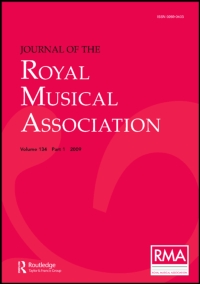No CrossRef data available.
Article contents
Some Thoughts on Polyphonic Rhythm
Published online by Cambridge University Press: 01 January 2020
Extract
It has been said that one of our chief concerns in life is to justify our own particular point of view. Which allows the cynical retort, that this is not so very different from trying to prove one's own personal value. The more generous way, however, is to suppose no such aim. The best argument or philosophy must be based upon personal experience. If strong feeling does not underlie it, it will certainly be of no account. As one, therefore, who is keenly alive to the beauties of polyphonic music, I trust I may be pardoned if I attempt to justify my convictions, and I shall do so on what I hope are rather more than the grounds of taste. Schumann, I believe, once said that an artist's dictum is worth a ton of aesthetics—or to that effect. And this is true enough. But it is also true that an artist's dictum will be more respected if he can buttress it with what, to him at any rate, is logical argument. But beyond this, I think argument on old music is particularly necessary at the present time. For very skilful stand has been made against its principles in certain quarters; and if, as some of us would have, there is to be a spread in both the knowledge and love of old art, we must be prepared to advance with something more in our hands than that foolish old weapon “De gustibus non est disputandum.” I speak from a certain pain and suffering of its misuse. I was organist of a church where sometimes I allowed myself the joy of playing a Bach Fugue after service. On such occasions, almost invariably, a certain cleric would come up to me and say, “What ! more German scales, Mr. Scott ?” And if I ventured to disagree with him I was always met with “De gustibus, etc.,” which he thought supported his case to a nicety. So I know the value of Mr. “De gustibus” pretty well.
- Type
- Research Article
- Information
- Copyright
- Copyright © Royal Musical Association, 1910
References
∗ Viewed simply as music we should take the chief accents of the phrases to coincide with notes which are prominent by their length and position. In this case, the third beats in each bar strongly assert themselves; the E♯ in the first bar by reason of its length; the B in the second bar because of its position and also because it comes after the quicker movement of the crotchets; and the F♯ in the third bar because it is the final note of the phrase.Google Scholar
† To compare the treatment of the harmony in the Bach Kyrie and the White anthem, it should be remembered that the crotchet of the Bach stands for the minim of the White anthem.Google Scholar


